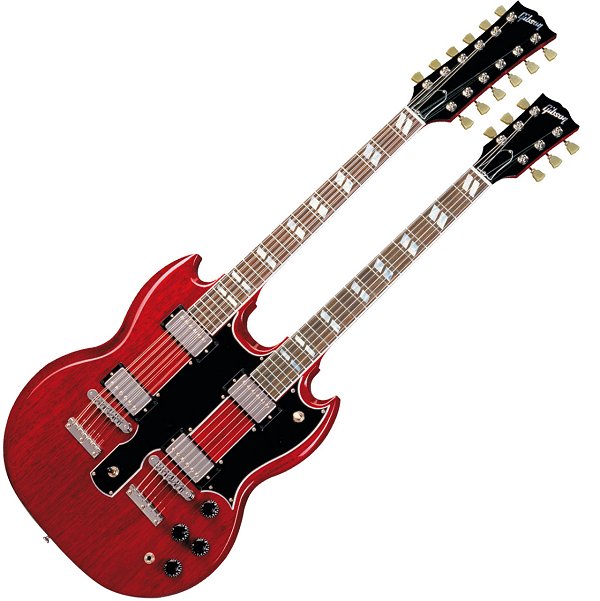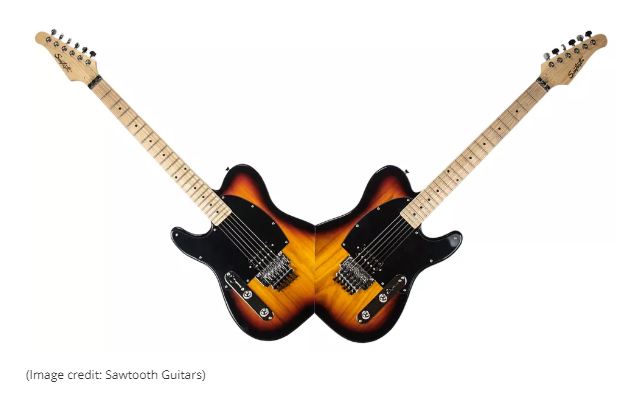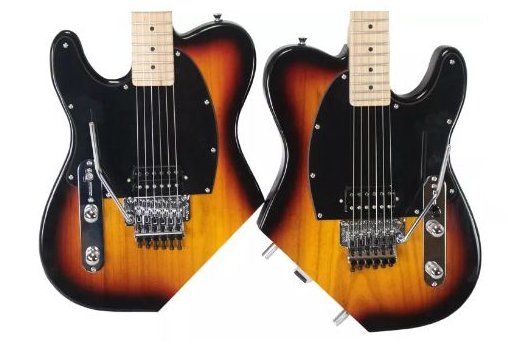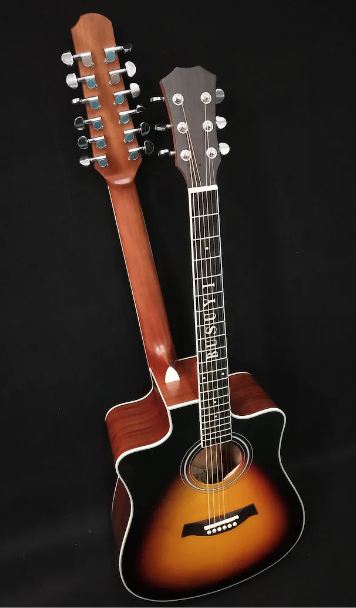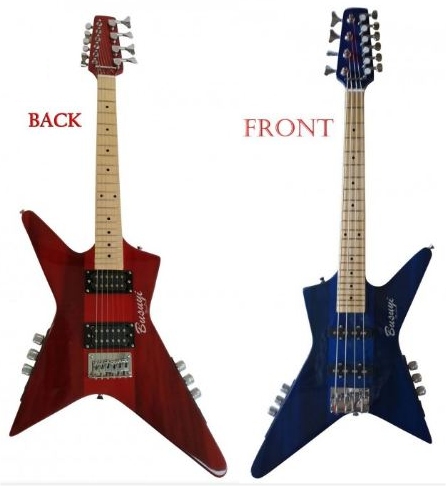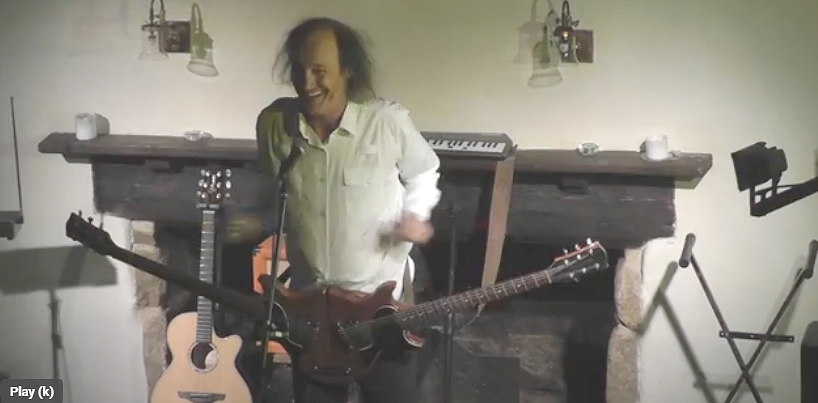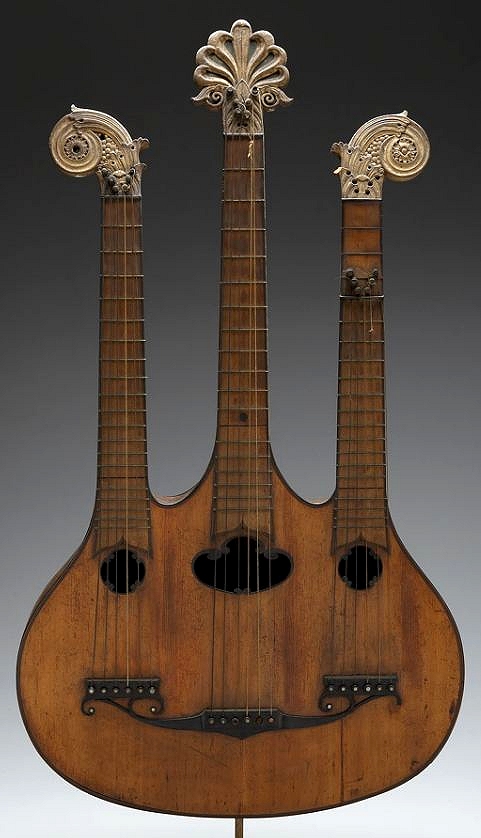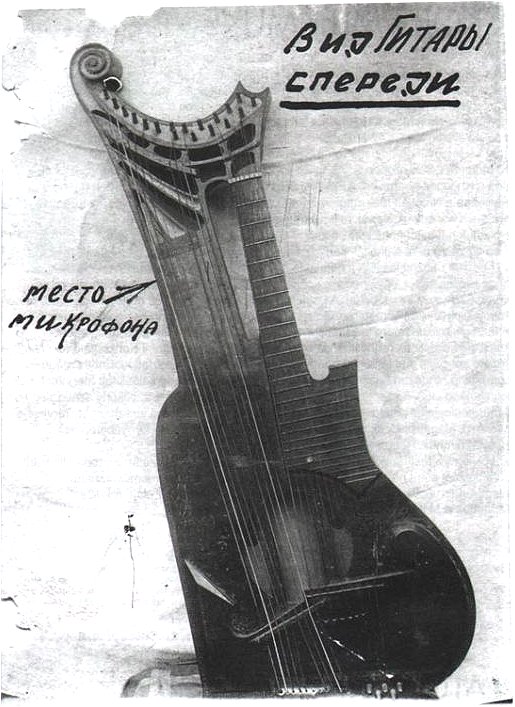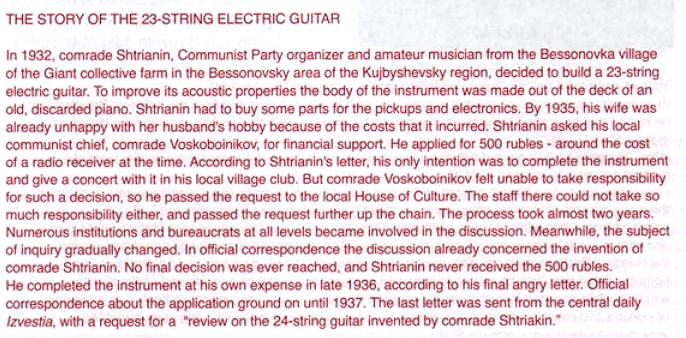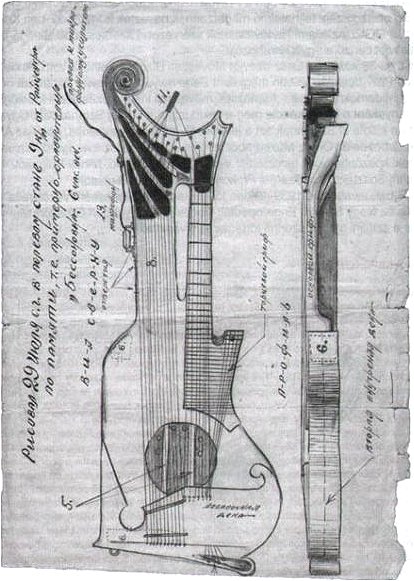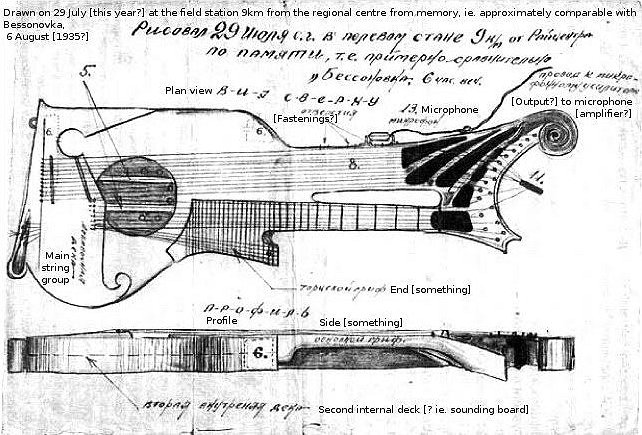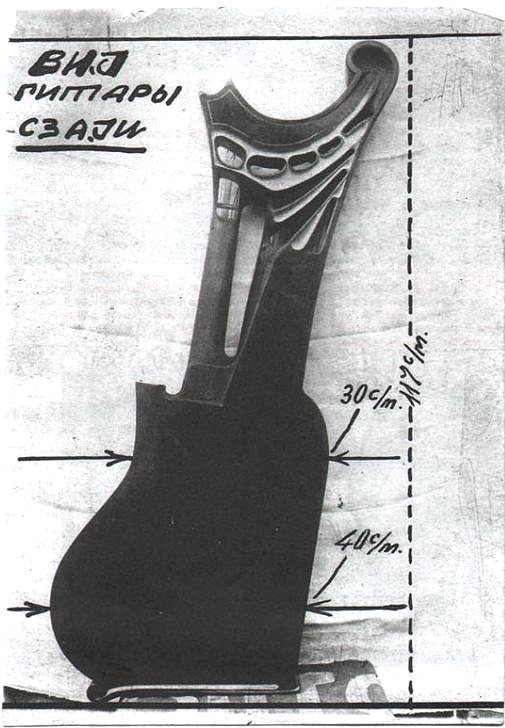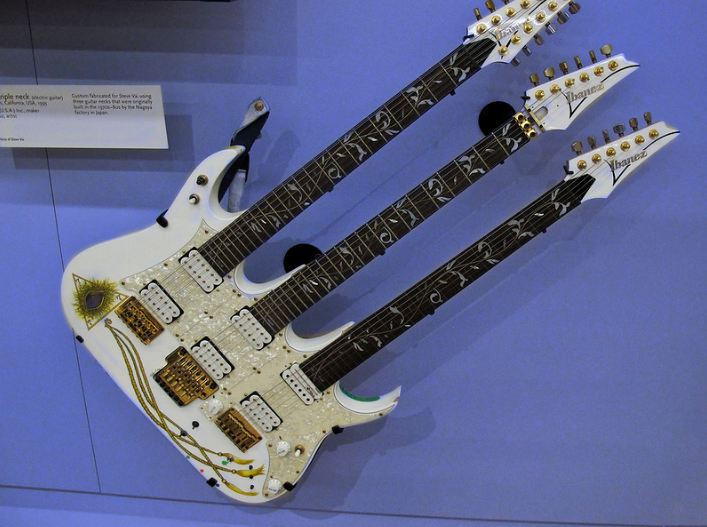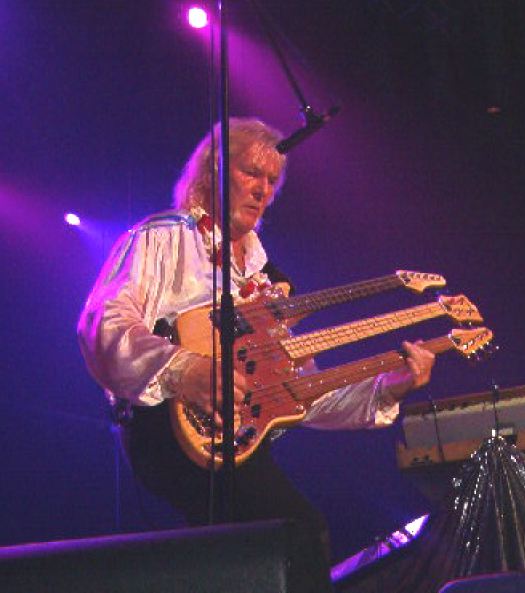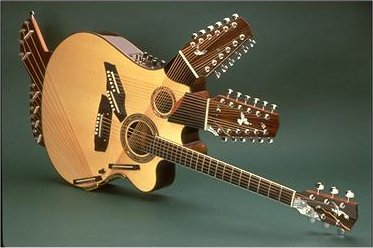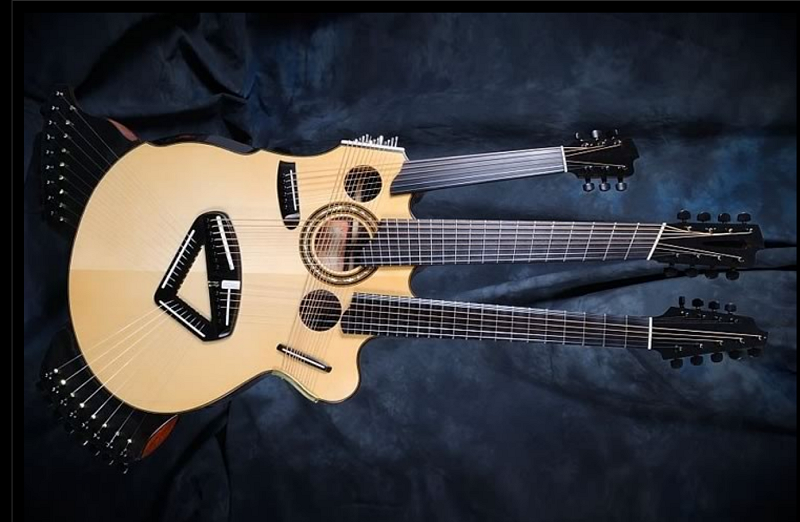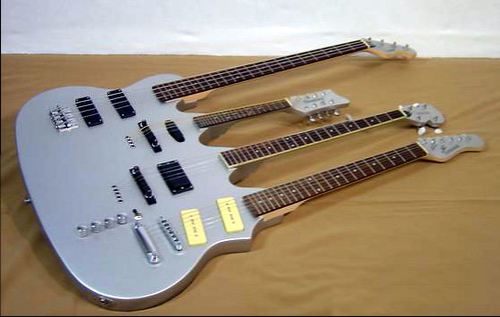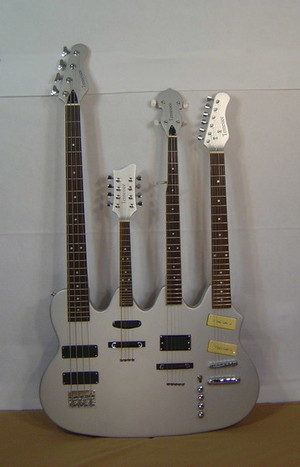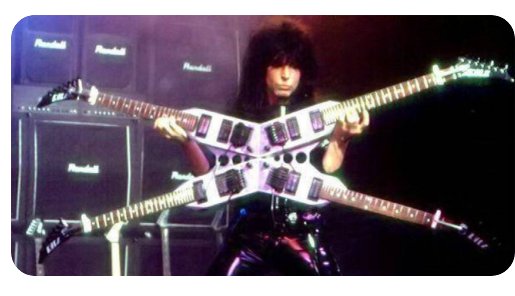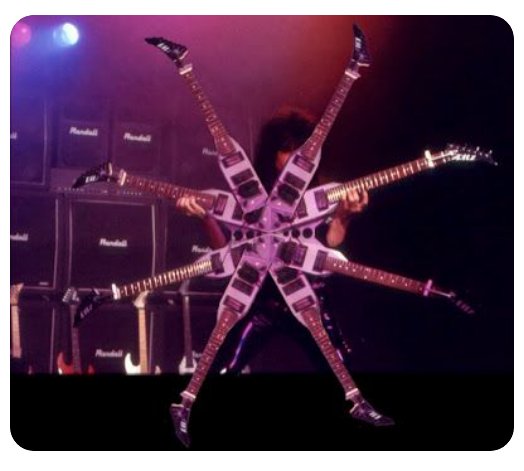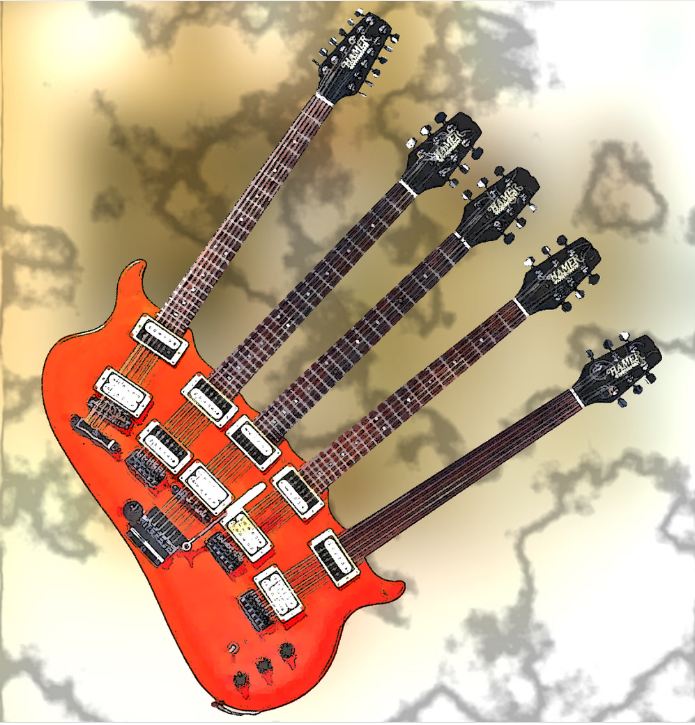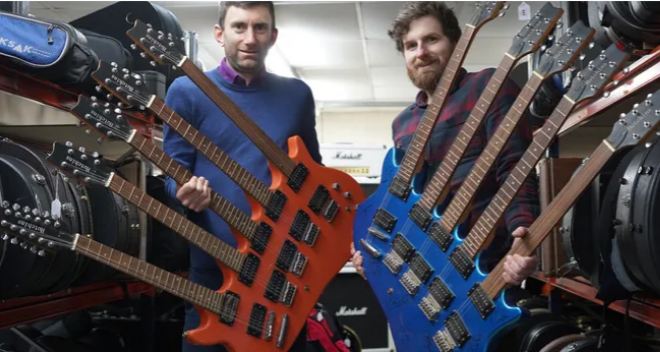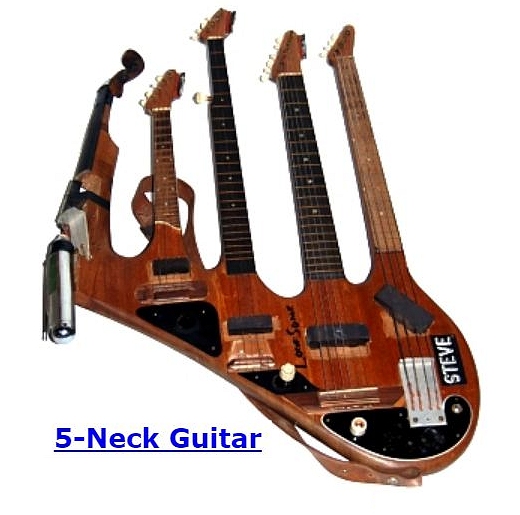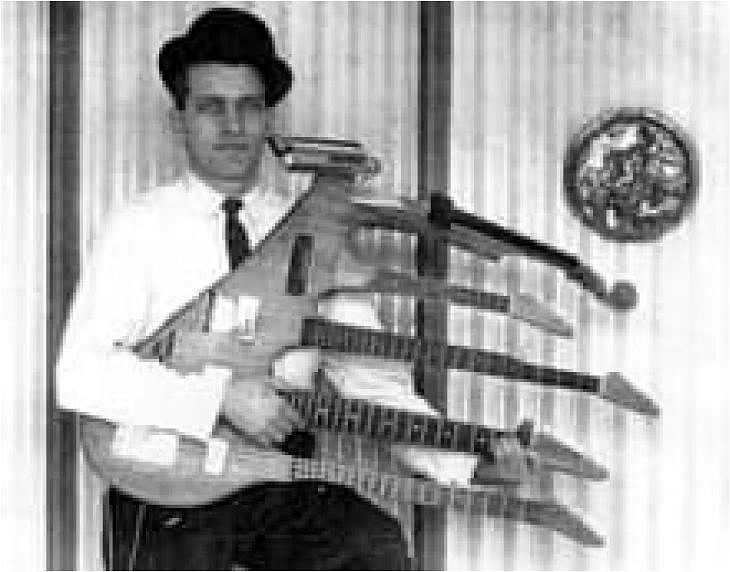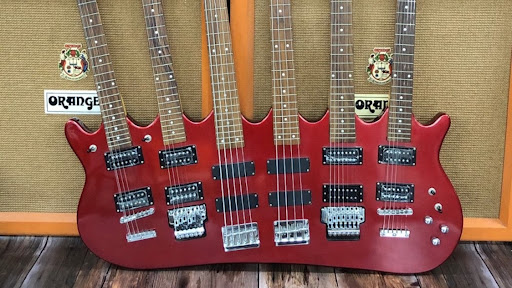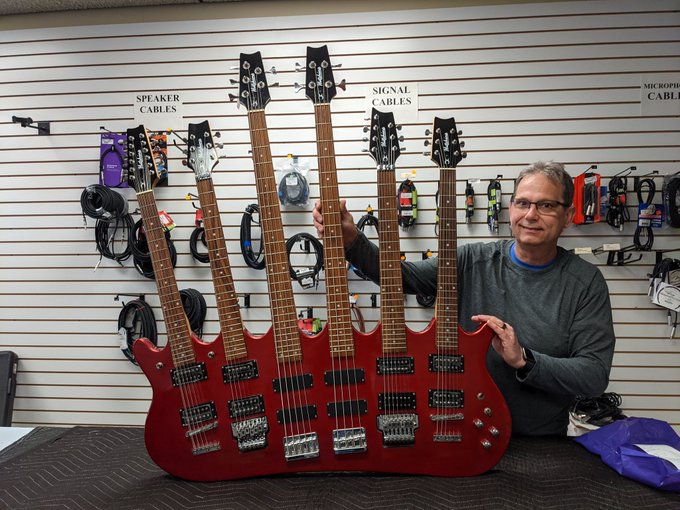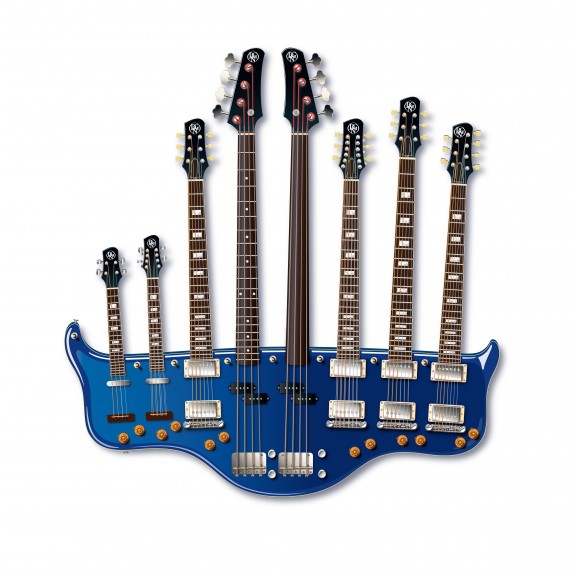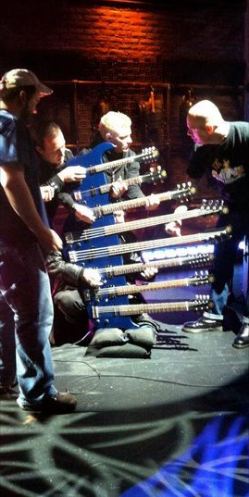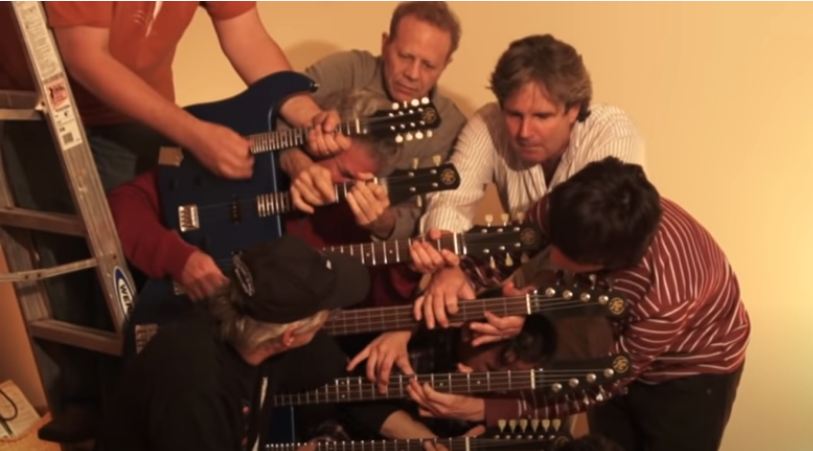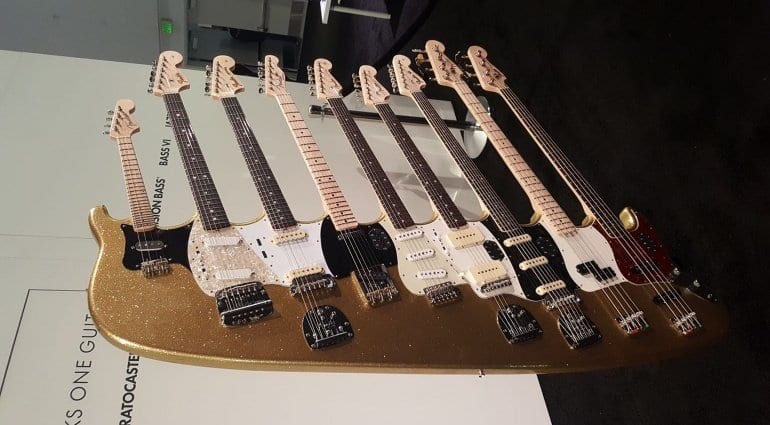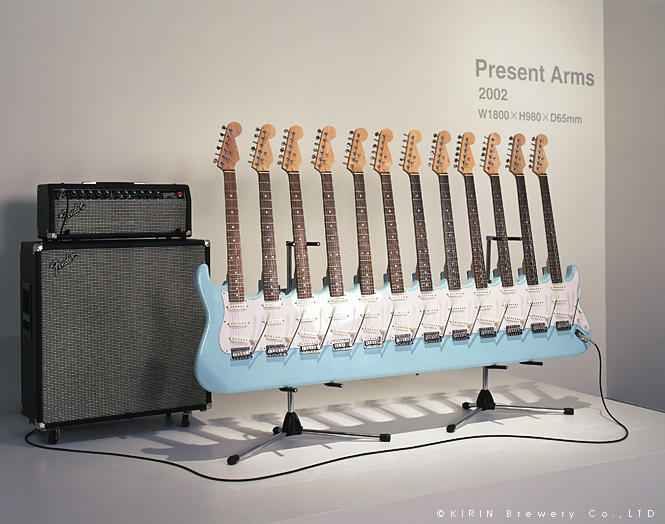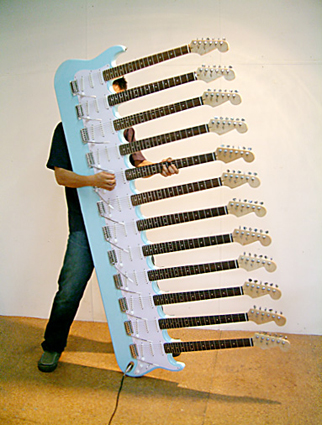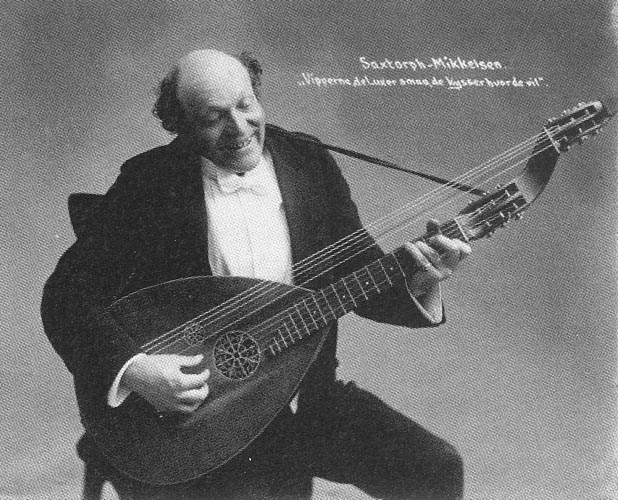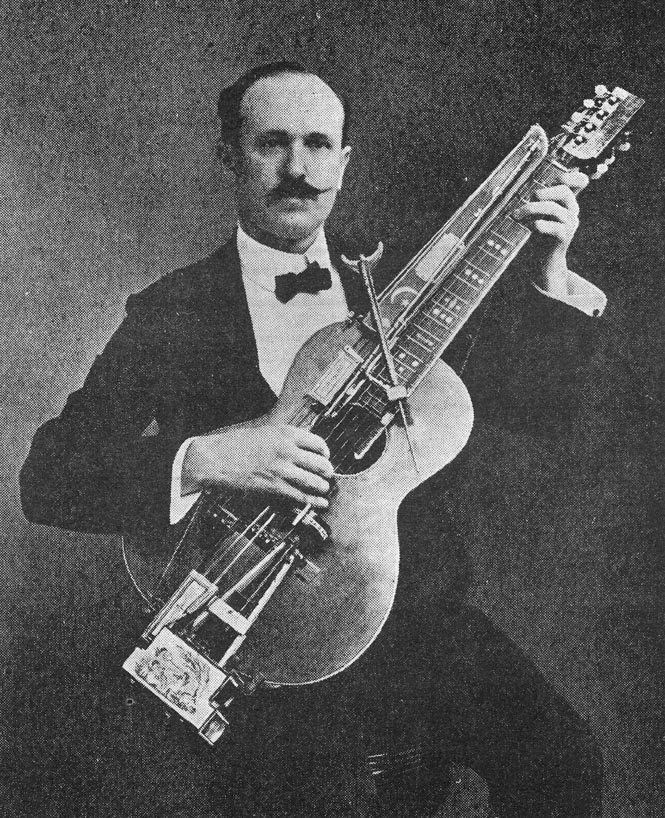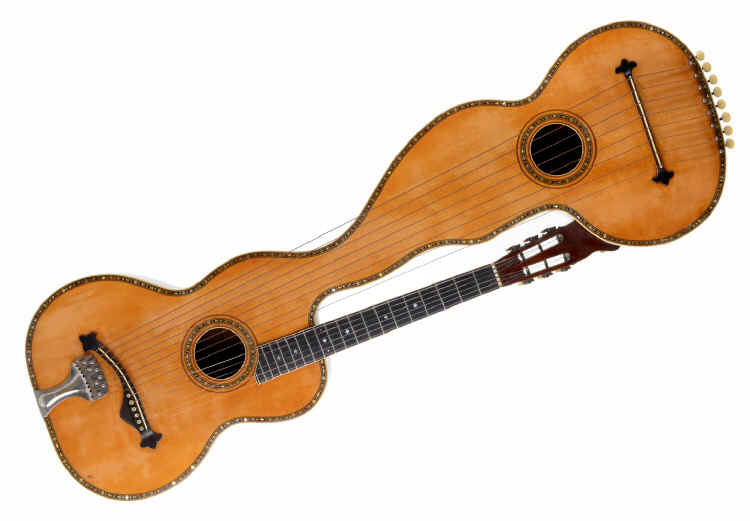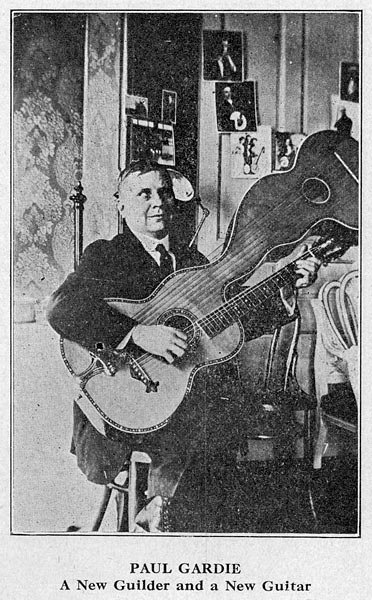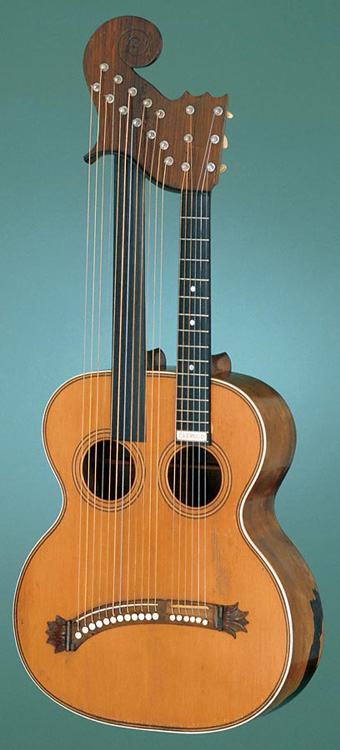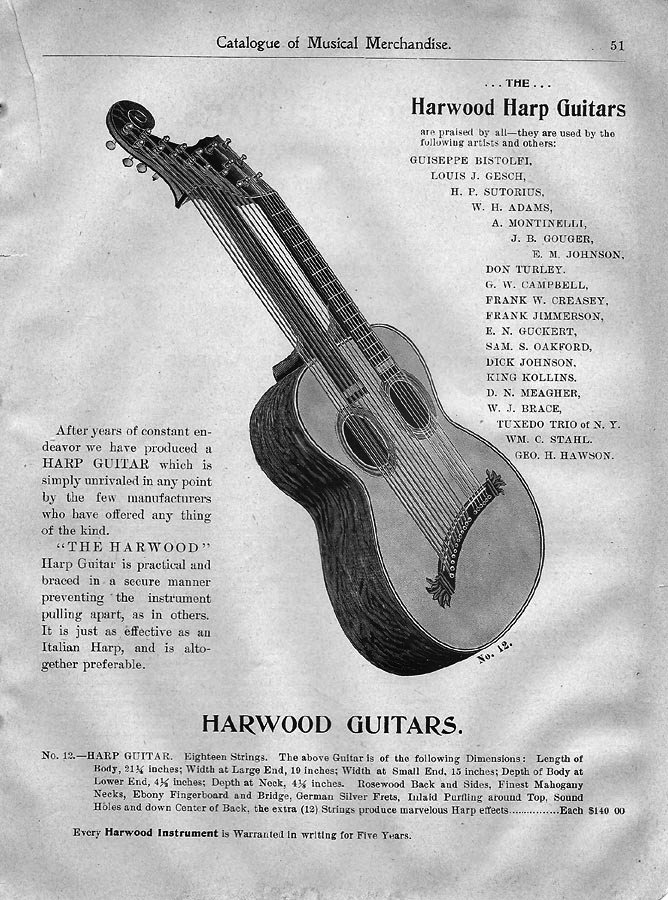The March 1906 issue of The Cadenza (the publication of the American Guild of Banjoists, Mandolinists & Guitarists) shows this picture of 'Professor' DeMain Wood and his Orchestral Guitar. The contraption he is holding is a standard Washburn guitar that Wood converted into a mechanically-operated one-man-band. The instrument survives, and was sold on eBay on June 2004. The strings under the long decorative cover have a sort of reverse fretboard- so it probably counts as a multineck guitar rather than as a true harp guitar.
According to the Scientific American the guitar was fitted with four extra strings, a mouthpiece that fingered a string, a mandolin effect, and a vox humana, which "enable the player to combine the tones of the guitar, the mandolin, and the zither and to rival the finest vox humana effects of the organ or the violin." Vox humana (human voice) is an organ stop, and it seems unlikely there were a bank of organ pipes built into the guitar somewhere. What vox humana means when applied to a violin is not clear. Contemporary pictures of the instrument have been found and confirm that there was a lot of mechanical complication.
The mouthpiece for string fingering is the curved thing level with DeMain Wood's chin. The mandolin effect is currentlly wholly obscure. The box at the bottom of the guitar appears to contain a clockwork motor that drove a small wheel bearing multiple picks to give a mandolin effect (reapidly repeated notes) when engaged. It does not seem to have worked like a hurdy-gurdy wheel.
I am not convinced that DeMain Wood was actually a professor. However he was not dismissed as a nutcase or a novelty act; the evidence is that he was a respected performer, and that his mechanical guitar worked very well. It was said to have been developed over twenty years.
Source: Scientific American 28 August 1897, pp 137-8







